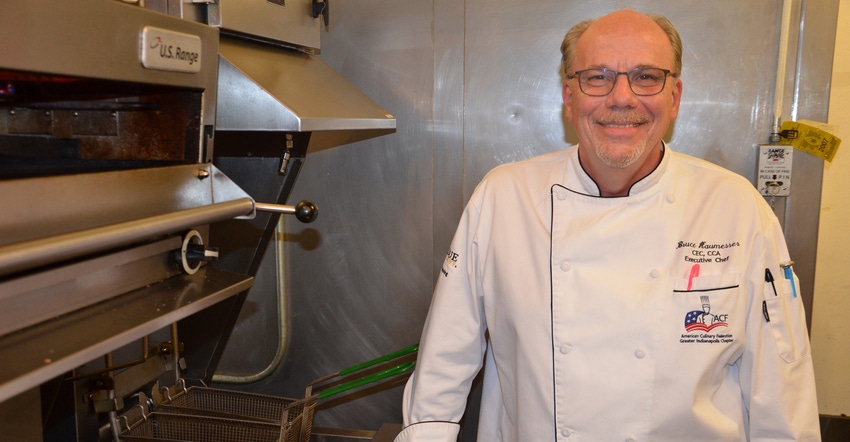
The Purdue University dining courts made history in January 2019 when three of the five facilities that serve students on campus switched to a 50% blend of high-oleic soybean oil for frying foods. The Sagamore Room, Purdue’s elite dining experience in the Purdue Memorial Union, operated by students, used 100% high-oleic soybean oil for frying and for certain salad dressings.
Marshall Martin, an administrator in the Purdue College of Agriculture, notes that in late 2019, the dining courts took another step to use even more Plenish oil, the brand name for the high-oleic soybean oil.
Purdue is now using 100% high-oleic soybean oil for frying at all five food courts, not just the three food courts that converted to 50% soy oil in 2019.
Ed Ebert, senior director of grain production and utilization with the Indiana Soybean Alliance, notes that increased use at Purdue gives another boost to the promotion of Plenish and high-oleic soybean oil in general. Ebert, Martin and farmer-directors of ISA were instrumental in getting Purdue to try the oil nearly four years ago. ISA also provides financial support when necessary to help offset the extra cost of Plenish vs. the oil the Purdue food courts used before. Whether there is a cost difference and need for offsetting varies as market conditions vary.
Bruce Haumesser, executive chef and directory of culinary operations at Purdue, has been involved with the project since the beginning.
Increased soy oil use
Here is an interview with Indiana Prairie Farmer and Haumesser, bringing you up to date on current use of high-oleic soybean oil on the Purdue campus.
Why did you make the shift to 100% high-oleic soy oil for frying? The product testing indicated [it was] a better frying oil. Also, the Food and Drug Administration has approved it as Heart Healthy, which is a huge plus for our student population.
Is it still used at the 100% rate at the Sagamore Room restaurant, too? Yes, the Sagamore Room continues to use the 100% high-oleic soy oil.
Is the Indiana Soybean Alliance helping with the cost? Yes, they are supplementing the costs to bring them in line with the canola we were previously using.
Martin and Ebert mentioned your cooks are also doing tests to see how long you can use the oil before changing it to new oil. Can you tell us more? We will be utilizing a test strip which the makers of the soy oil have created. We will be testing this very soon at all five dining courts. So [right now], the results are yet to be determined. But as time goes by, we will be able to evaluate our successes against what we saw during the testing phases.
Our hope is that the longevity of the [high-oleic soy] oil will more than offset the actual price of the oil long term.
About the Author(s)
You May Also Like




